As I threatened promised earlier, this is a look at my other book done as pre-separated art. Owly was done after Honest Andrew and this time I wanted to work with watercolor instead of pencil.
The key to pre-sep art is keeping each layer perfectly registered. Transparent materials like acetate or tracing paper make registration simple, as you can line up the registration marks through the transparent layers. I wanted to use the support I was most comfortable with, watercolor paper, which is most definitely not transparent. But, as long as I could keep the layers in register it would work out just fine.
Owly was a three-color book (I made certain this time). I stretched three sheets of watercolor paper (one for each “color”) and transferred the line drawings (same drawing, three times) and registration marks for the first spread in the book. I then painted one page for each color (as described in the previous post).
I stretch because it keeps the paper perfectly flat, with no buckling, no matter how wet the paper gets. There a couple methods for stretching. I use ¼” tempered masonite – tempered on both sides. The surface of un-tempered masonite will fray when the tape is removed.
I use un-reinforced 3” brown paper tape, the kind you wet with a sponge, to fix the wc paper to the board:

The paper is soaked in cold water for about 10 minutes. Then it gets sandwiched between two layers of paper towels:

The paper should be patted dry. This is very important, because the tape won’t adhere well if the paper is too wet.
Put the paper on the masonite. Wet the pieces of tape and put them 1 inch on the paper and 2 inches on the board. With your palm, rub down the tape for a minute (each piece as you apply them), working out any air underneath:

Here is a close up of the taping and the dry, stretched paper:

As the paper dries, it will contract, and it will pull on the board and the board will begin to bow:

This creates a space beneath the paper. It has some play to the surface, like a stretched canvas.
Another way is to staple the paper (after soaking and drying) to a piece of homasote. This kind of board doesn’t bow, but it’s a simpler process.
And that’s how to stretch watercolor paper!
Oh.
Right.
Owly. Here is my rough sketch for the jacket:
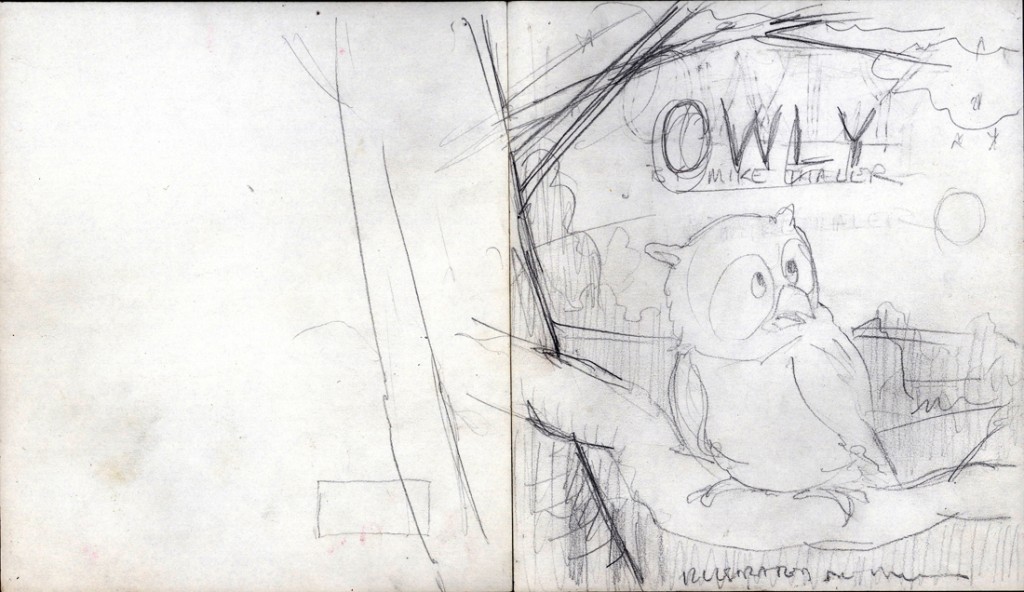
Here is the printed jacket. The colors used were brown, yellow and blue:
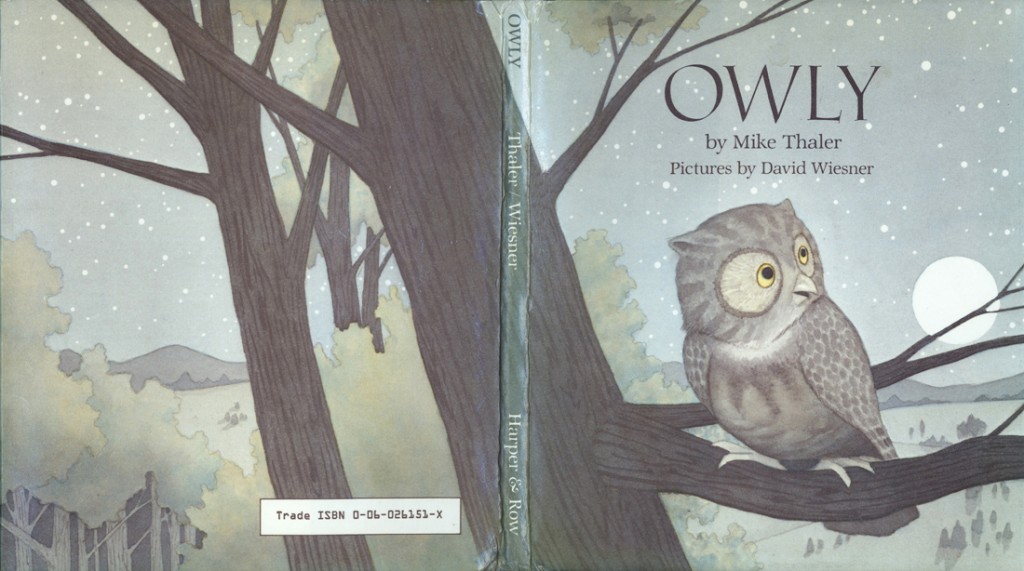
First, the blue:
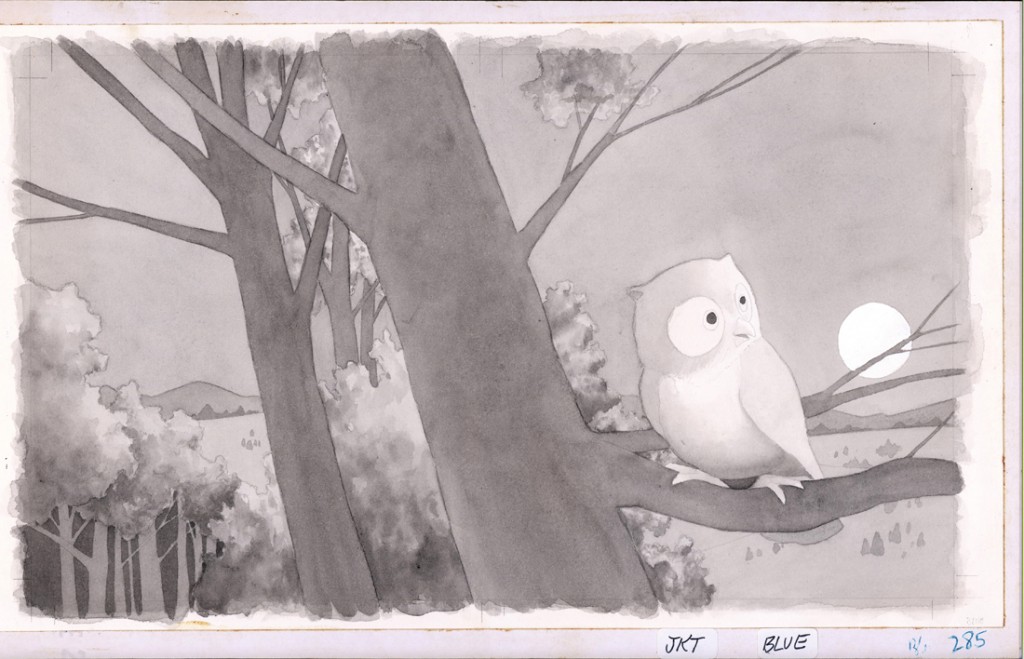
Second, the yellow:

Third, the brown:
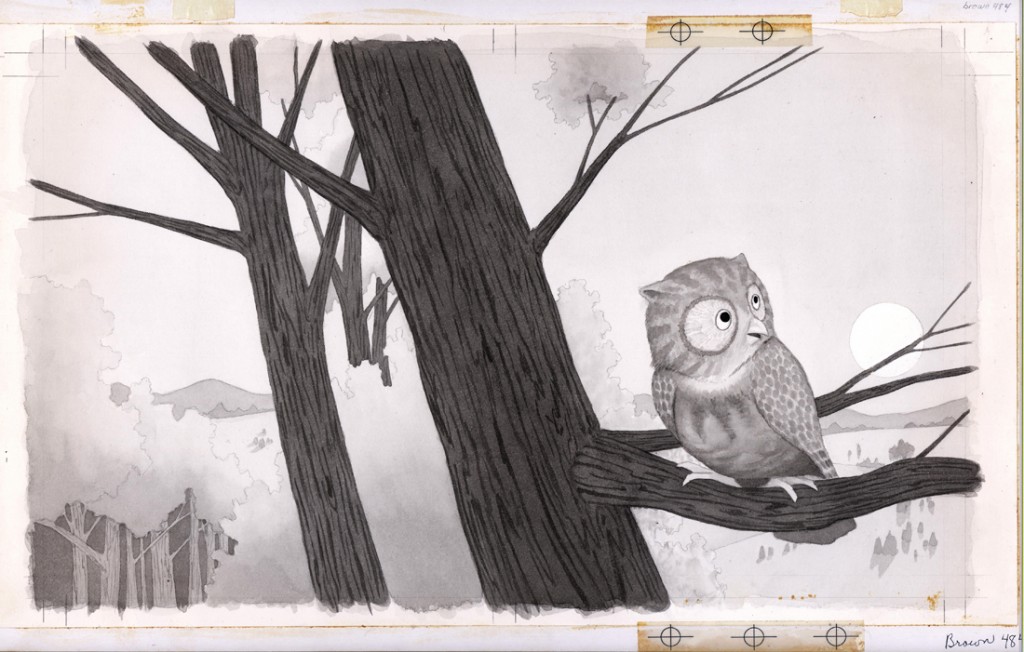
Here is the brown layer and an overly with the type. The black circles are the stars and moon – they will drop out to white:
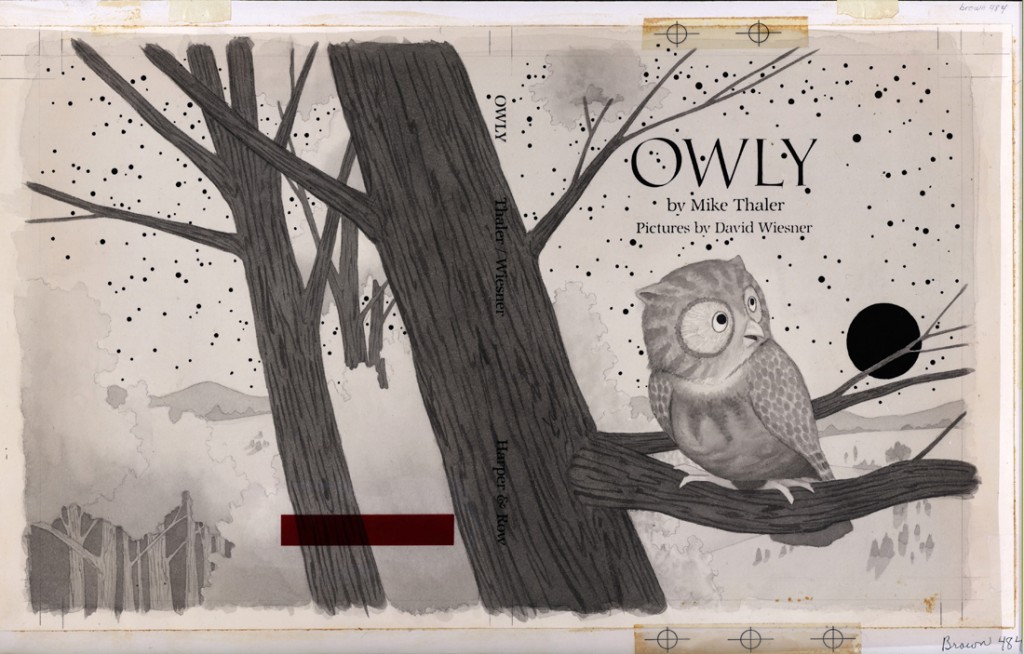
And here is the previous image with an overlay notating the color density for the type:
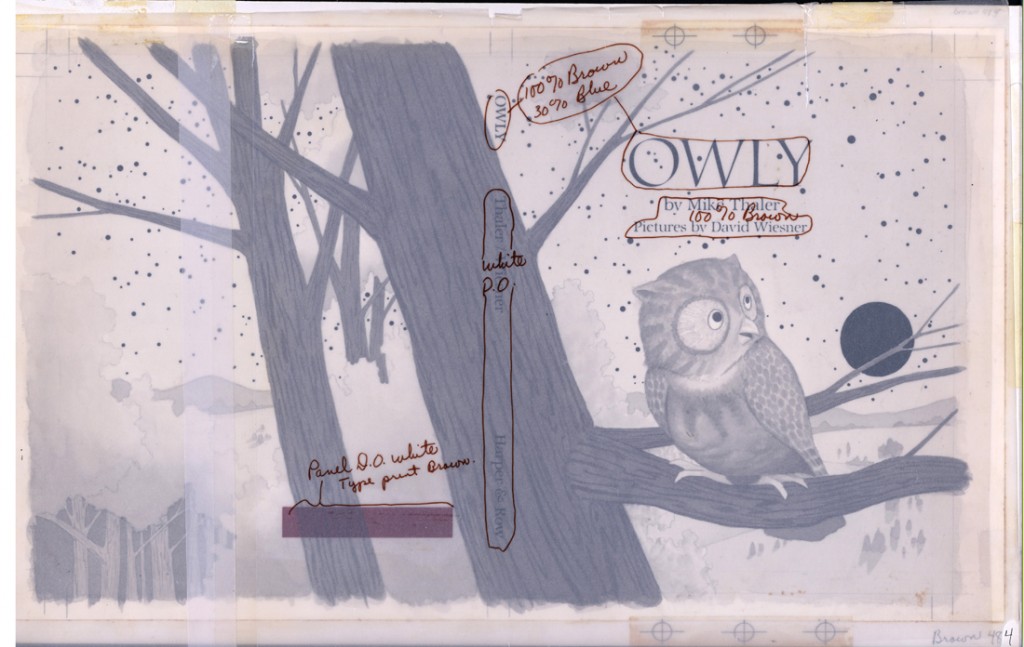
Finally, the jacket, printed in color:

The thing I didn’t realize was how stretching the paper would affect its shape when it was cut off the board. When the tension was released, the paper distorted just a bit and this altered the registration slightly. There was a lot of concern about this when the production department discovered it. I thought I’d never get hired again. The book went to press and we crossed our fingers.
In the end the printed images had an extra soft and fuzzy look about them that everyone really liked. Whew.
Owly stayed in print for nearly 25 years. I’d get royalty checks for $25, but hey, it was in print!
And, thankfully, that was the end of my career in pre-sep.